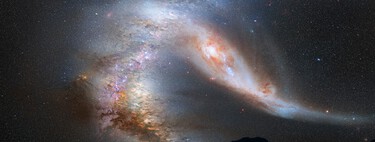Today much of Latin America will have the opportunity to see a solar eclipse. The eclipse will be partial in most of the South American continent, and annular in a small strip of Patagonia.
Where will it be seen? The eclipse will be visible from the southern and western parts of South America. As an annular eclipse it can only be seen in some areas of southern Argentina and Chile. Also Rapa Nui, Easter Island. In the rest of the two countries, as well as throughout Uruguay and Paraguay, it will be possible to see the eclipse partially.
Other regions where it will be possible to see the partial eclipse are southwest Peru, central and southern Bolivia and southern Brazil. Very tangentially, the eclipse could be seen in the southwest area of the Baja California peninsula and on the coast of Jalisco and Colima, although it will not be visible from places like Puerto Vallarta.
Outside Latin America, the partial eclipse will be visible in several archipelagos of the Pacific, such as Fiji, French Polynesia, Hawaii or the North Island of New Zealand.
When? When will the eclipse arrive? It will depend on our location. The first area in continental America where the eclipse will be visible will be the Baja California peninsula, where the eclipse will occur around 16:55 UTC, 09:55 local time on the Mexican peninsula.
The sky will begin to darken on the coast of Chile two hours later, at 3:55 p.m., Chilean local time (6:55 p.m. UTC). Around 20:15 UTC the eclipse will be visible to its greatest extent, reaching the shadow of countries such as Peru, Bolivia or Brazil.
The annular eclipse will begin to be visible on the southern coast of Chile around 5:18 p.m. local time (20:18 UTC) and will disappear off the southern coast of Argentina at 5:31 p.m. local time (20:31 UTC). ).
The end of the eclipse. The eclipse in South America will end with the arrival of nightfall on the east coast of Argentinaaround 18:45 local time (21:45 UTC).
Caution, always. Whether we are in the partial or annular zone, if we want to observe the eclipse we must take precautions if we want to avoid eye damage. We should not look directly at the Sun during the eclipse, nor should we protect ourselves with conventional sunglasses, since these do not protect us enough to avoid damage.
If we want to see the eclipse directly we will need glasses of eclipse approved for such use. If we cannot achieve one, we can see the eclipse indirectly, for example in the shadows of the tree canopy.
The next eclipses. He next eclipse of Sol will occur in March 2025, will be partial and will cover the north of the planet, particularly areas around the North Atlantic and in the Arctic. Something similar will happen in September of that same year, only in this case it will be the southern hemisphere that will see the partial eclipse. In February 2026 there will be another annular eclipse that will be visible only in Antarctica.
To see a total eclipse we will have to wait until August 2026. This eclipse will be visible from Spain and the Arctic. The next total eclipse will also be visible from Spain in August 2027.
In Xataka | Meteor showers, planetary alignments and lunar phases: all the astronomical events that we have in view
Image | Rehman Abubakr










![[Img #74661]](https://thelatestnews.world/wp-content/uploads/2024/12/The-power-of-ultrasound-150x150.jpg)



![[Img #74661]](https://thelatestnews.world/wp-content/uploads/2024/12/The-power-of-ultrasound-300x200.jpg)

Add Comment